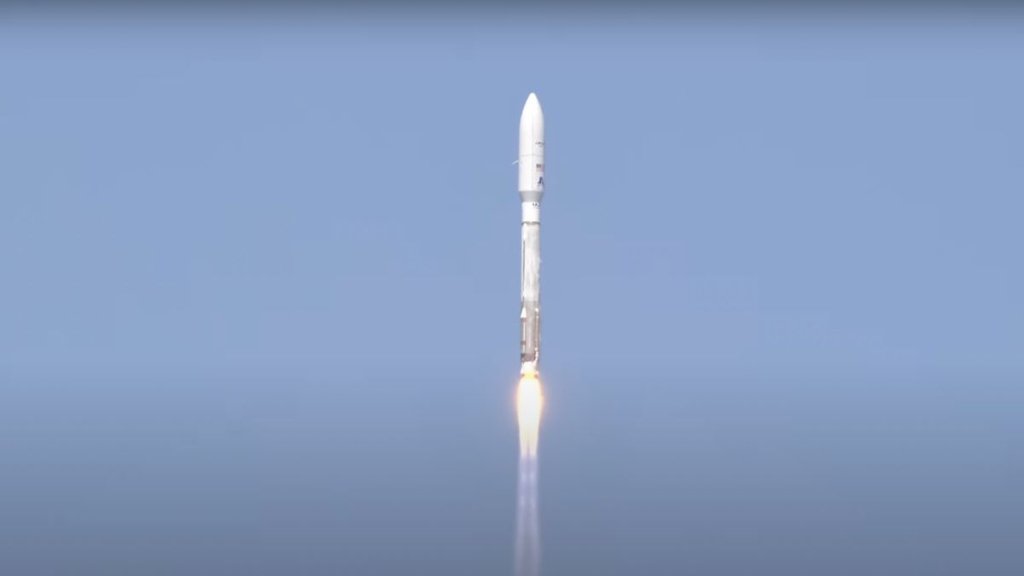Amazon has begun building its satellite-internet constellation.
The first two prototypes for the company’s Project Kuiper off-Earth network launched today (Oct. 6) atop a United Launch Alliance (ULA) Atlas V rocket from Florida’s Cape Canaveral Space Force Station at 2:06 p.m. EDT (1806 GMT).
The Atlas V‘s upper stage was scheduled to deploy the satellites, called Kuipersat-1 and Kuipersat-2, into a roughly 311-mile-high (500 kilometers) orbit about 18 minutes after liftoff. ULA ended its launch webcast today before that milestone was reached.
Related: Facts about ULA’s workhorse Atlas V rocket
Amazon began research and development work on Project Kuiper in 2018 and received a deploy-and-operate license from the U.S. Federal Communications Commission in 2020, according to a company FAQ.
That license greenlit an initial constellation of 3,236 satellites, stipulating that Amazon must be operating at least half of them by July 2026. Most of the Project Kuiper spacecraft will reach low Earth orbit (LEO) atop a trio of heavy-lift rockets: ULA’s Vulcan Centaur, France-based Arianespace’s Ariane 6 and New Glenn, which is built by Blue Origin, the aerospace company founded (like Amazon) by Jeff Bezos.
None of those rockets have flown to date, which explains why the Atlas V was involved today. KuiperSat-1 and KuiperSat-2 had been slated to fly on Vulcan Centaur’s debut this spring, but that liftoff kept getting delayed. So, in August, Amazon decided to swap ULA launchers.
It was the second switch for KuiperSat-1 and KuiperSat-2, actually; the prototypes were originally supposed to launch on ABL Space System’s RS1 rocket late last year, but Amazon changed course after ABL experienced delays with that vehicle.
Vulcan Centaur will lift off for the first time before the end of the year, if all goes according to plan, sending a lander built by Pittsburgh company Astrobotic toward the moon. Ariane 6 is expected to debut in early 2024, while New Glenn could get off the ground for the first time later that year.
Notably absent from the Project Kuiper launcher list is SpaceX‘s heavy lifter, Falcon Heavy, which already has seven missions under its belt. Falcon Heavy will fly for the eighth time next week, if all goes according to plan, sending NASA’s Psyche spacecraft toward a metallic space rock in the asteroid belt.
SpaceX, of course, operates its own broadband megaconstellation in LEO: Starlink, which is already up and running with a suite of nearly 5,000 functional satellites.
And that number will continue growing far into the future. SpaceX has approval to deploy 12,000 Starlink spacecraft in LEO and has applied for permission for another 30,000 satellites on top of that.
Project Kuiper, meanwhile, has just entered the orbital-test phase.
KuiperSat-1 and KuiperSat-2 “will allow us to test the communications and networking technology that will be used in our final satellite design, and help us validate launch operations and mission management procedures that will be used when deploying our full constellation,” Amazon representatives wrote of the satellites in late 2021.

